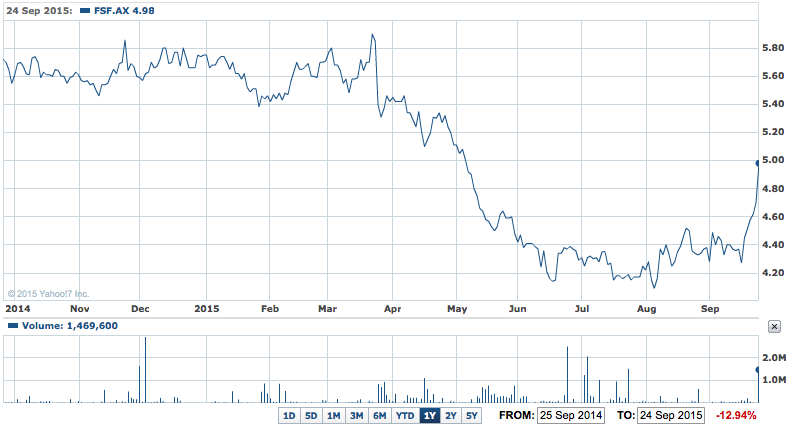Some good news at last for the embattled dairy industry in NZ from its major player, Fonterra (FSF).
The hit to the Kiwi economy from the long slide in dairy prices has been eased with Fonterra yesterday forecasting a pay rise for farmers in the coming year.
Fonterra said its new forecast of $NZ4.60 per kilogram of milksolids is up 75 cents on the previous forecast of $3.85/kg of milksolids – that’s the key indicator for the health and wealth of the NZ economy.
It is the first increase in more than 18 months.
A combination of a 25% jump in global dairy prices in the past two worldwide auctions (the next is next Tuesday), the fall in the value of the Kiwi dollar, intense cost-cutting by Fonterra and others in the industry (which is onging) and falling milk production has given the troubled industry a glimmer of hope.
If the higher forecast price is maintained, Fonterra will pump an additional $NZ1.2 billion into rural NZ over the next year, as well reassuring banks that many indebted farmers can service their debts.
FSF 1Y – Fonterra sees better prices ahead

The new, higher forecast came as the company announced that profits this year had almost trebled compared to last year.
The $NZ506 million net profit after tax – higher than estimated – was despite plummeting dairy prices, 750 staff cuts (lifted from 523 in a new round of cuts this week) and other cost reductions.
That compares with the $NZ179 million earned the previous year.
The result was a turnaround from the 76% profit plunge the previous year.
But regardless of the profit rebound, more jobs are set to go at Fonterra, just as the 523 staff made redundant in July finish up.
The 230 cuts announced on Monday hit administration roles in sales – ingredients, consumer, marketing, research and development, communications, health and safety, food safety and quality, group resilience and risk, property, procurement and change management.
The latest redundancies will lift Fonterra’s annual savings from the $NZ60 million per year previously announced, to $NZ100m million.
Helping the industry and the price has been an estimated 5% fall in NZ milk production as farmers cut back their output in reaction to the previous price cuts.
Fonterra Chairman John Wilson said yesterday that increased profitability in the last few months would likely translate to benefits for the current financial year.
Farmers have cut production in response to slowing demand from China and a surplus of supply in the US and Europe.
Fonterra chief executive Theo Spierings said the last year’s market conditions were the most difficult he had experienced.
“The global dairy industry has been hit simultaneously by geopolitical turmoil in the Middle East and Russia, Ebola in Africa, an economic slowdown in China and the sharp drop in oil and mineral prices,” he said.
"These events suppressed demand at a time when farmers all around the world had ramped up production in response to previous high prices. This resulted in an inevitable impact on pricing.
"Looking ahead, this uncertainty means that world markets are likely to be difficult in the medium-term. However, we will be more than ready when the market turns,” Mr Spierings said.
The revised forecast payout is made up of a Forecast Farmgate Milk Price of $NZ4.60/kgMS and forecast earnings per share of 40 to 50 NZ cents per share.
The forecast total payout available to farmers in the 2015-16 season is now between $NZ5.00/kgMS and $NZ5.10/kgMS.
Fonterra is also providing about 7000 farmers – 70% of its farmer shareholders – with an estimated $NZ430 million rescue package to help them cope with the low payout, which adds another 50 cents to every kgMS for which they have shares.
And while the news is encouraging, Fonterra warned that problems still abound.
"Current global prices are unsustainable. While there are signs that supply growth globally is easing, a lift in demand, which is needed for prices to continue to rise, is still to come,“ it said in yesterday’s statement.













